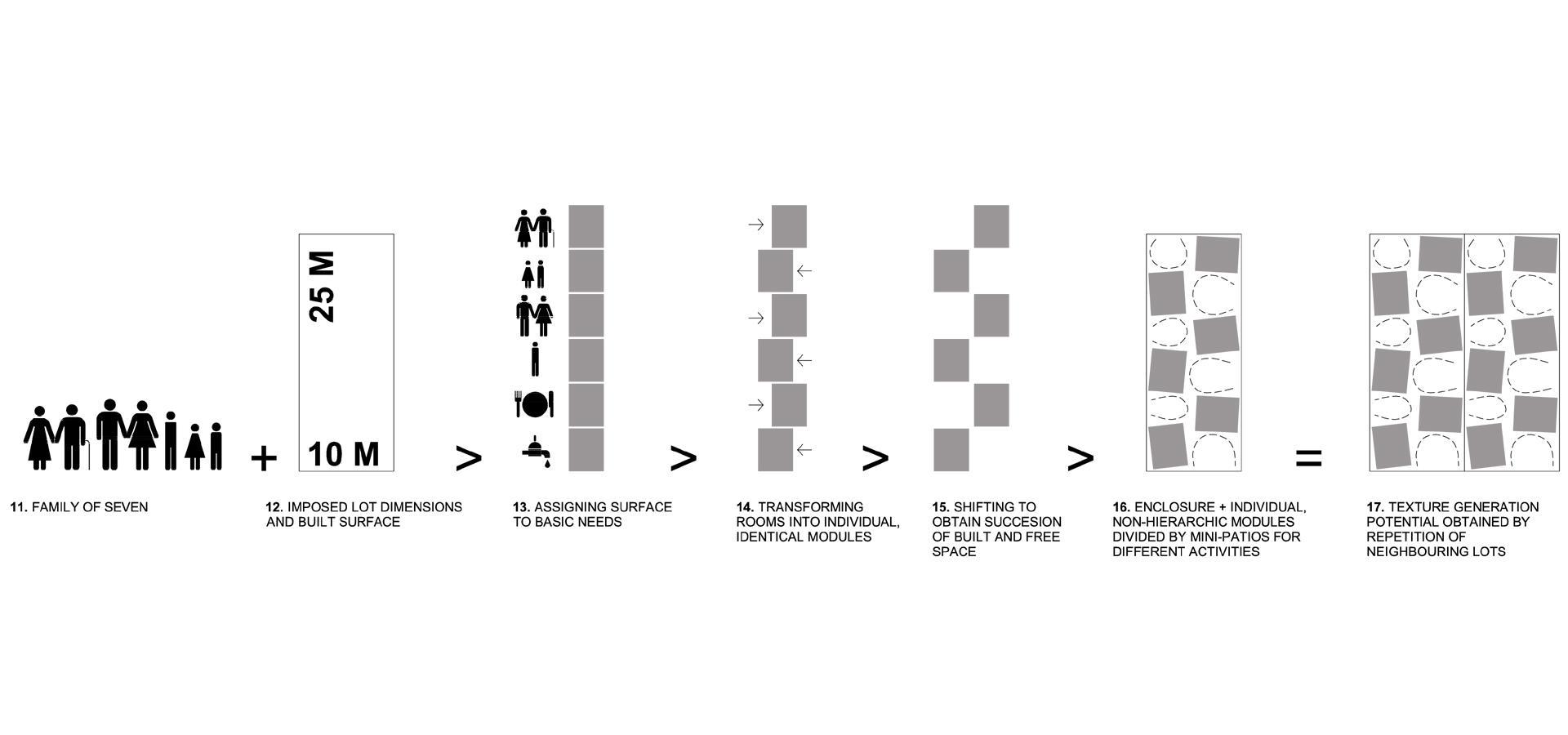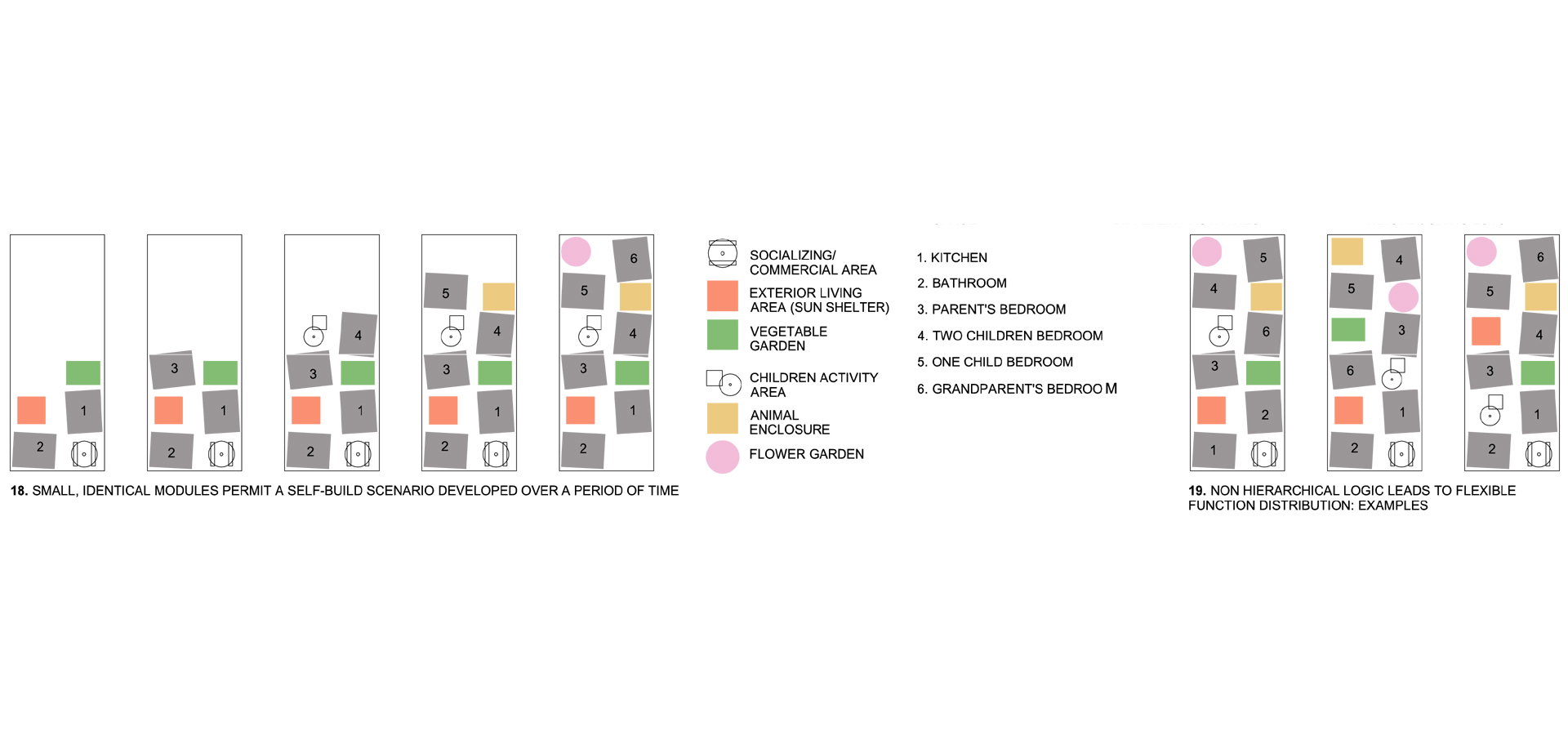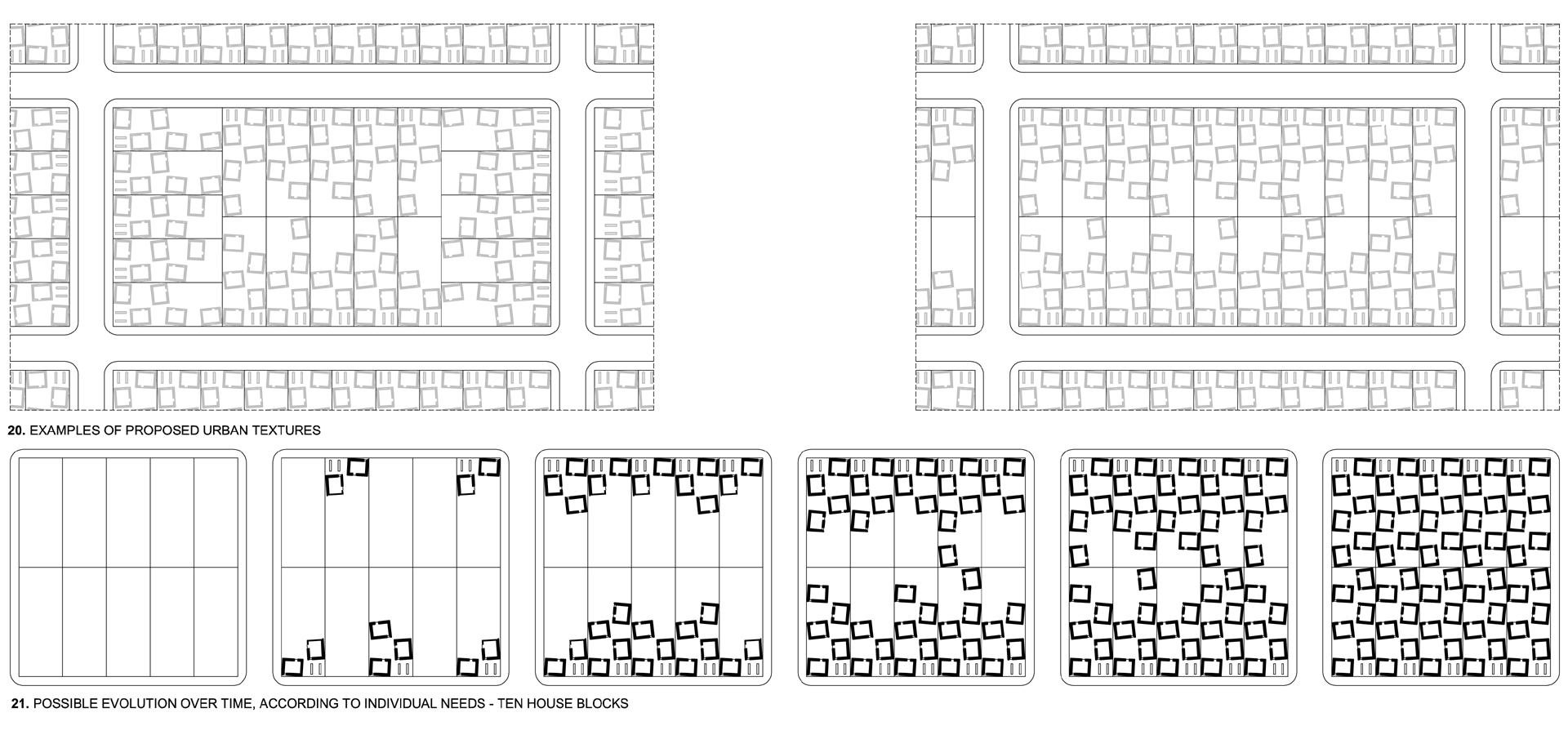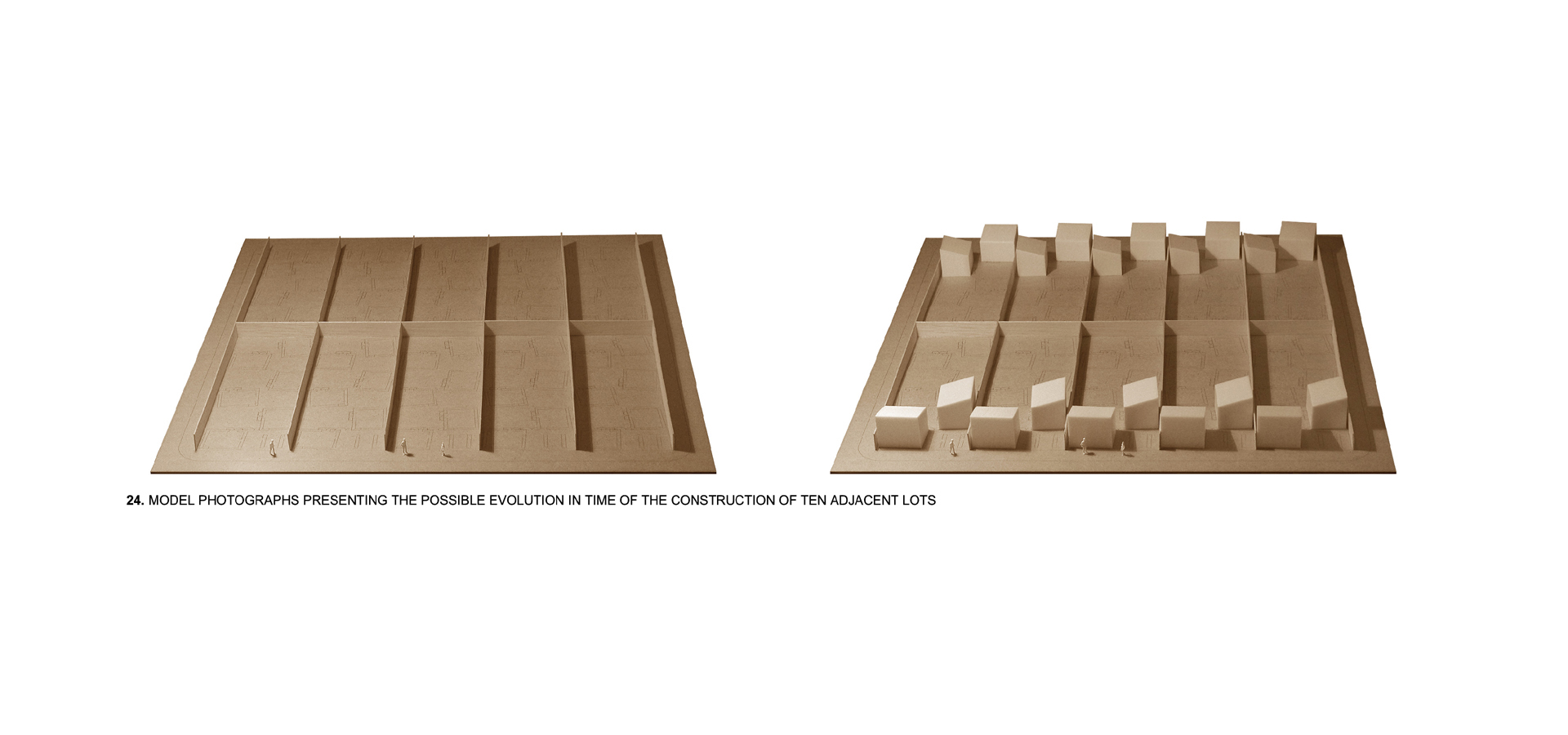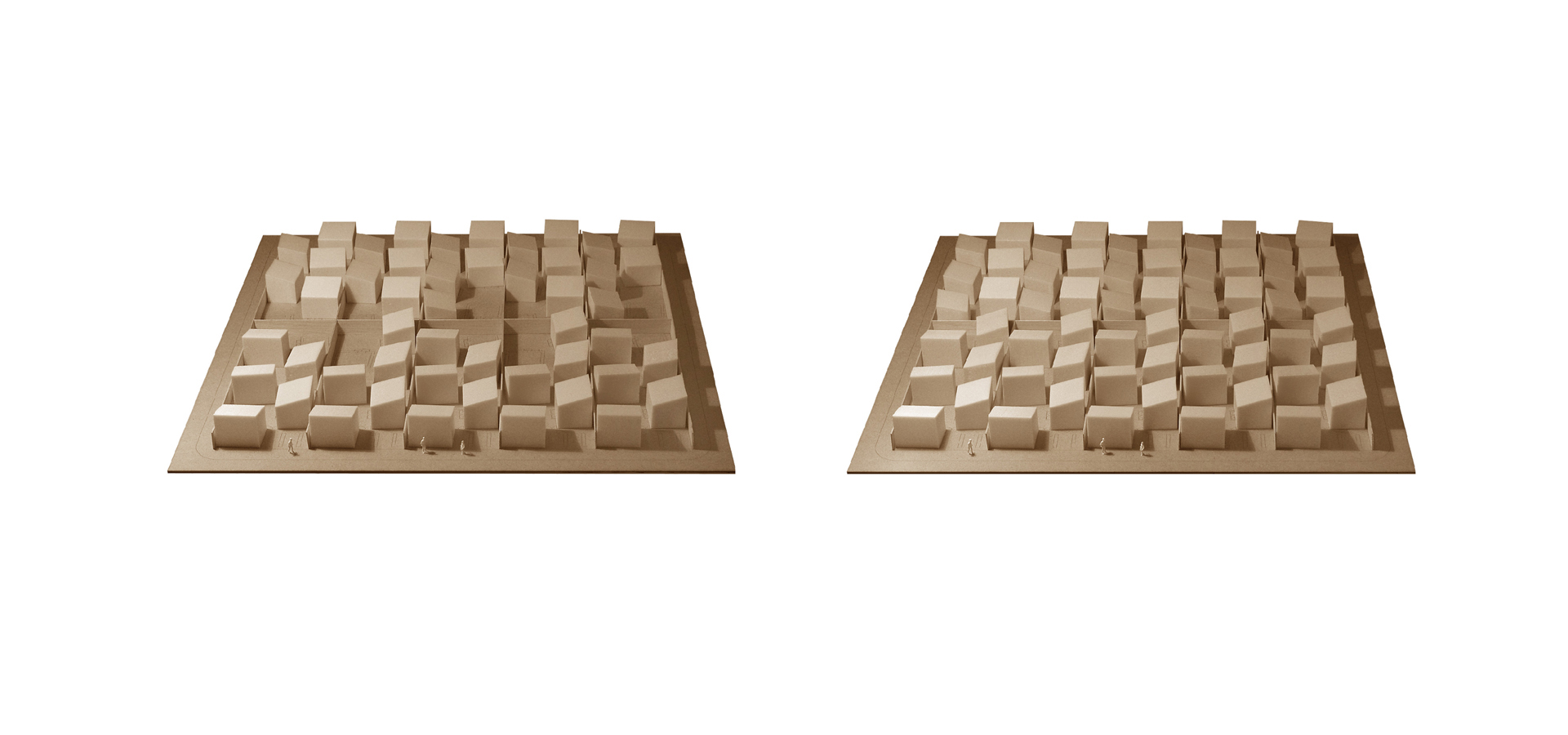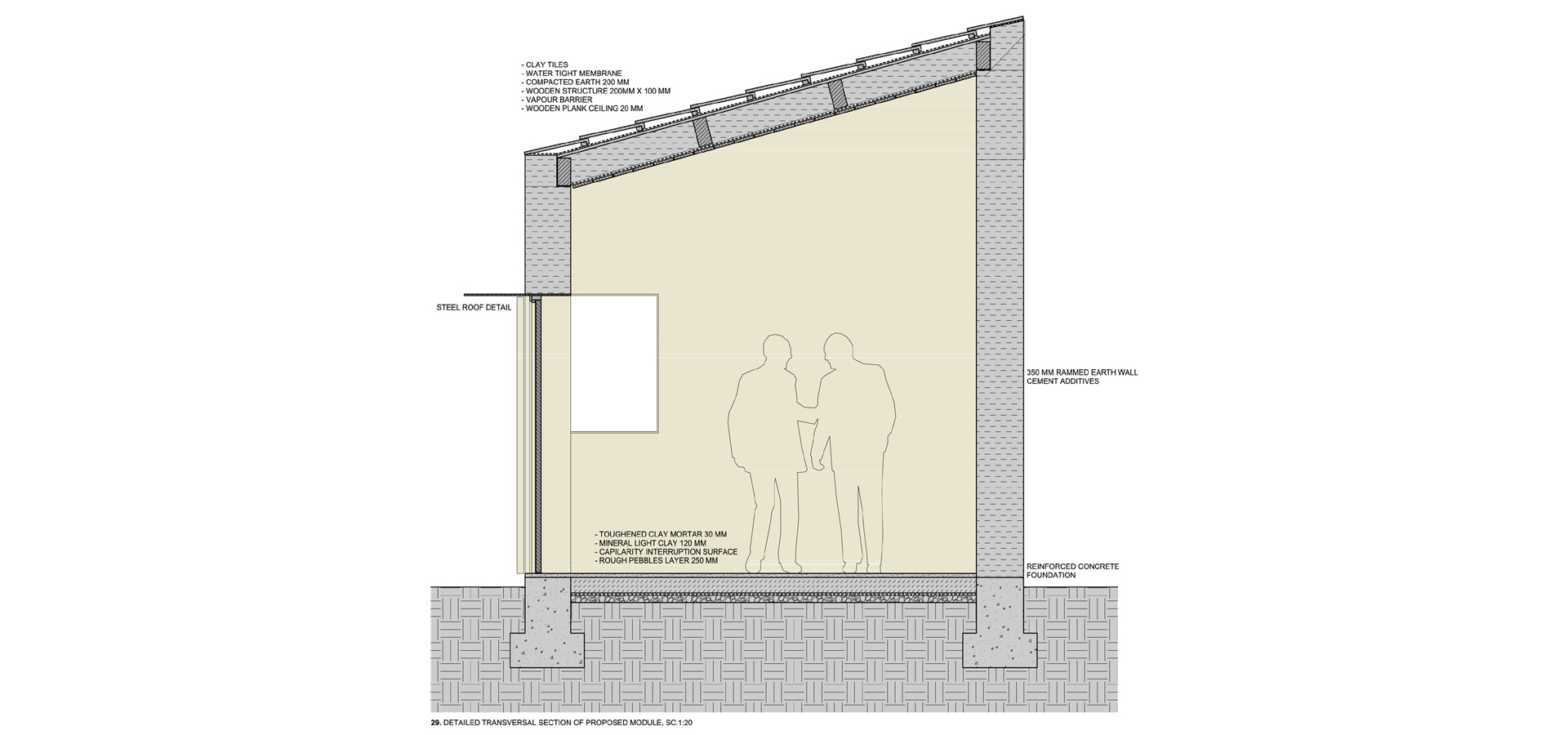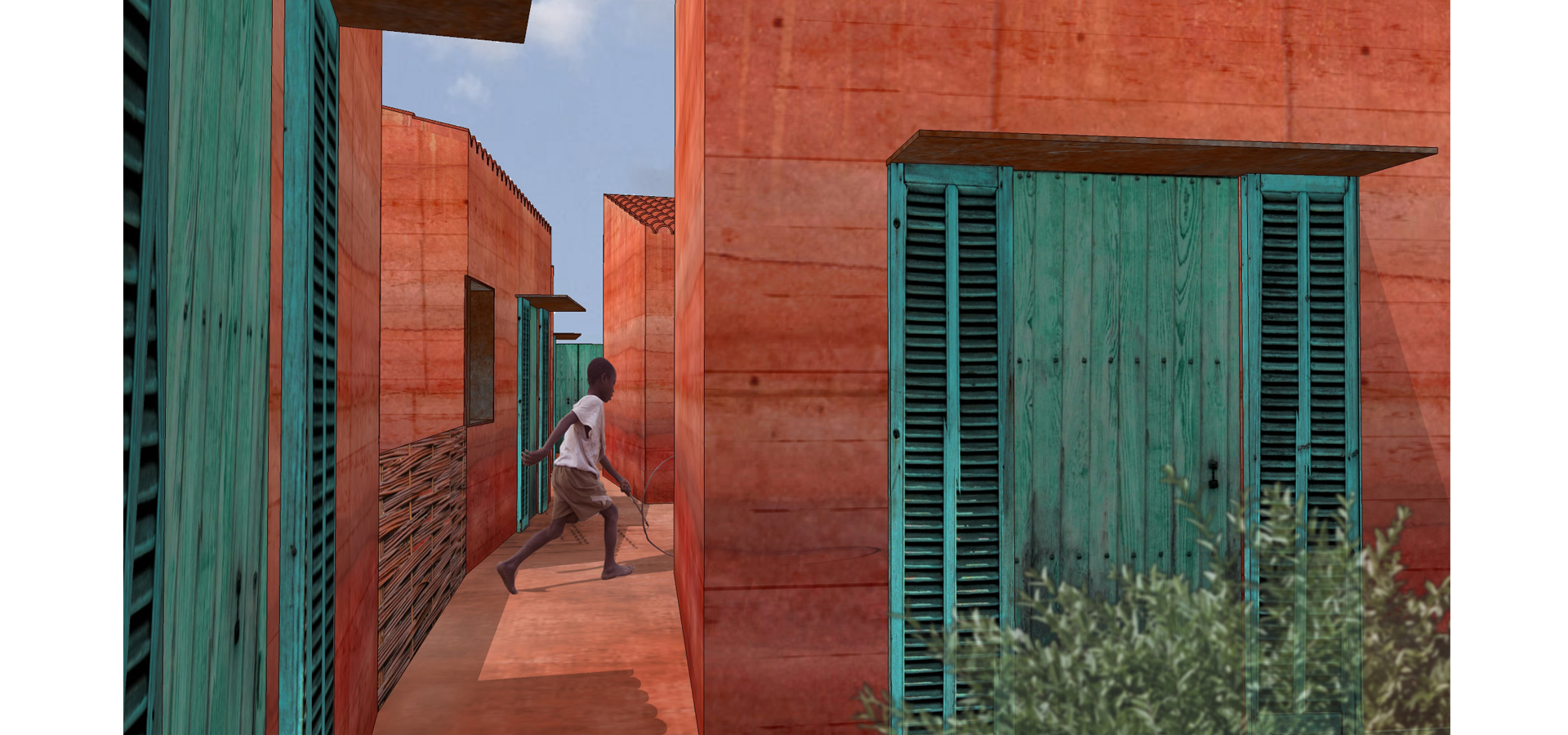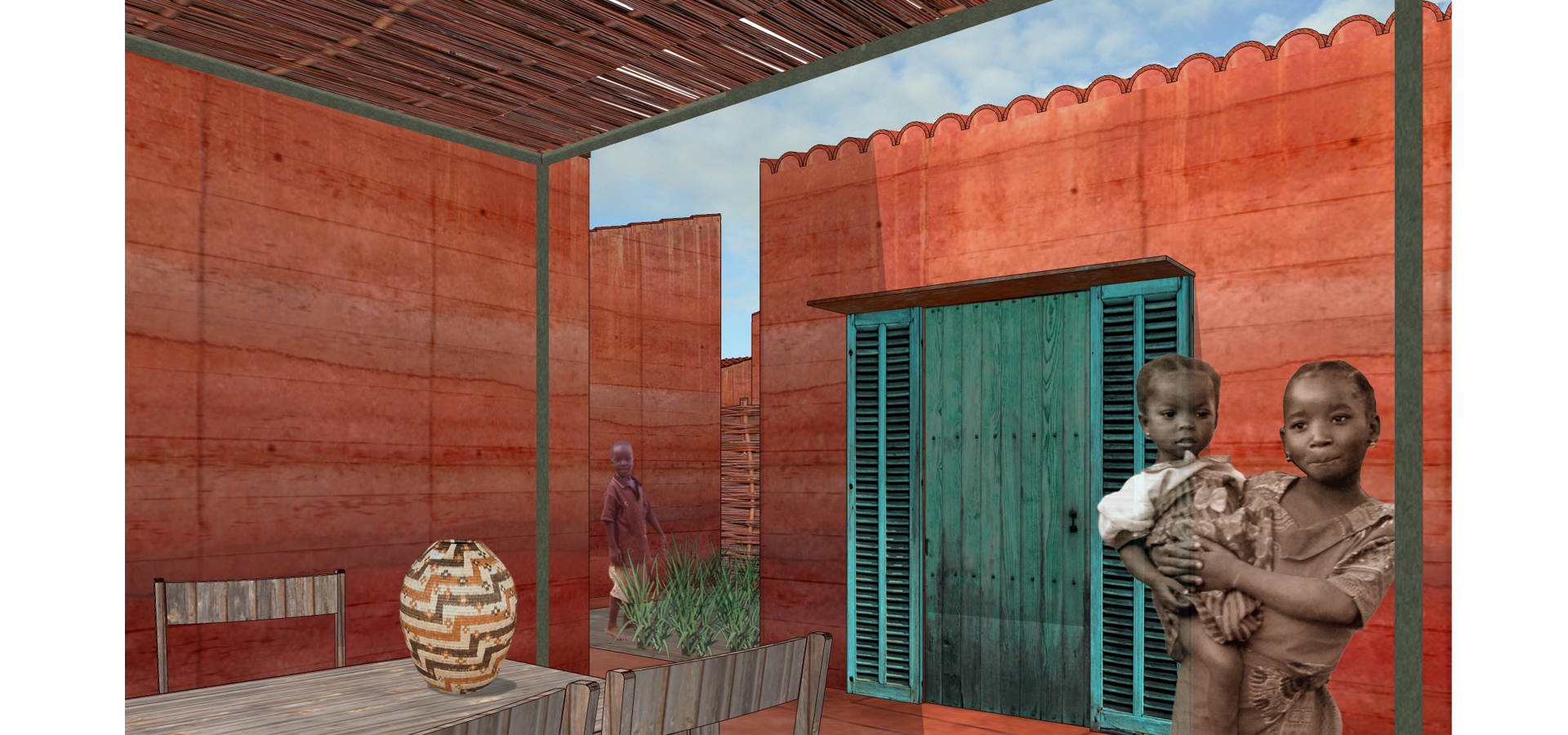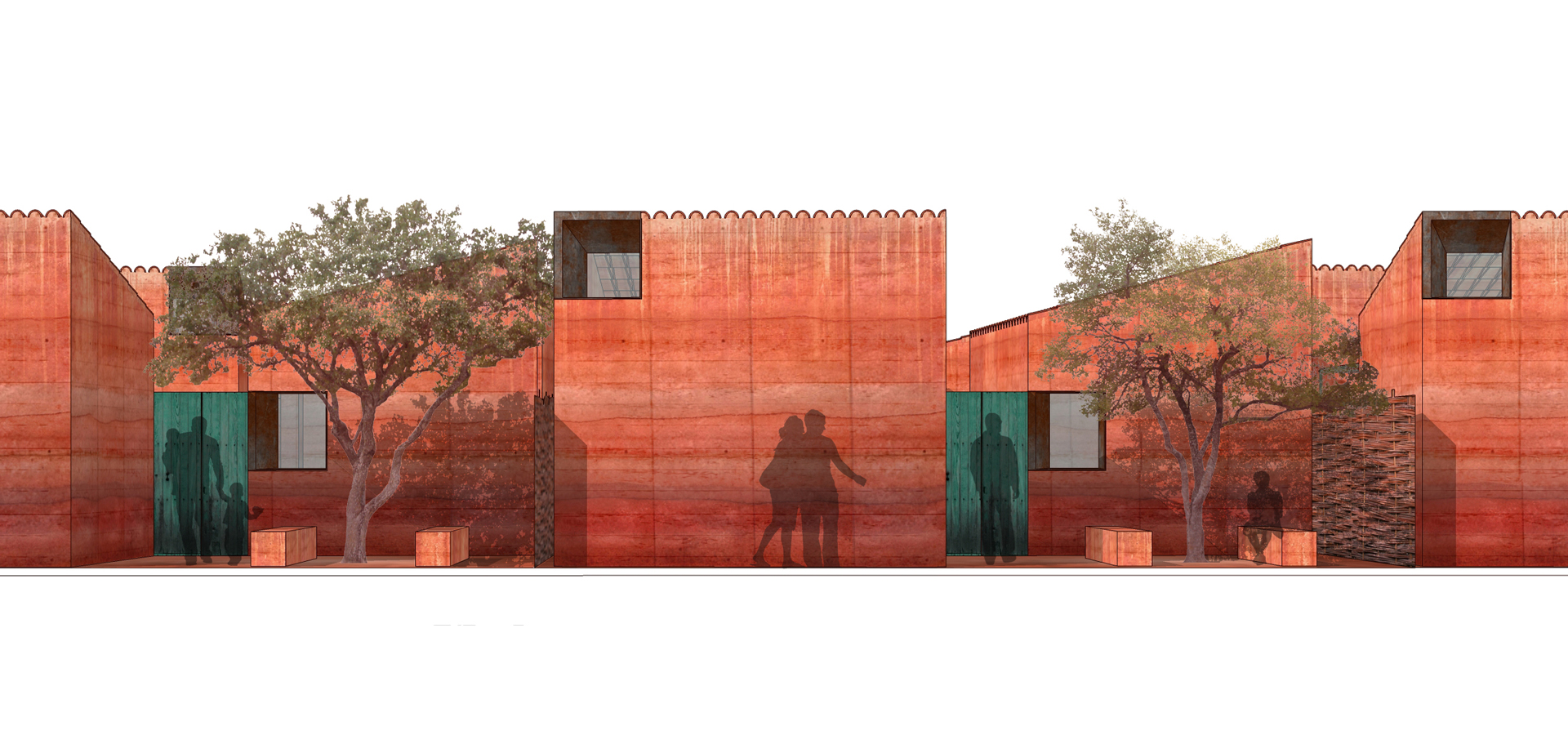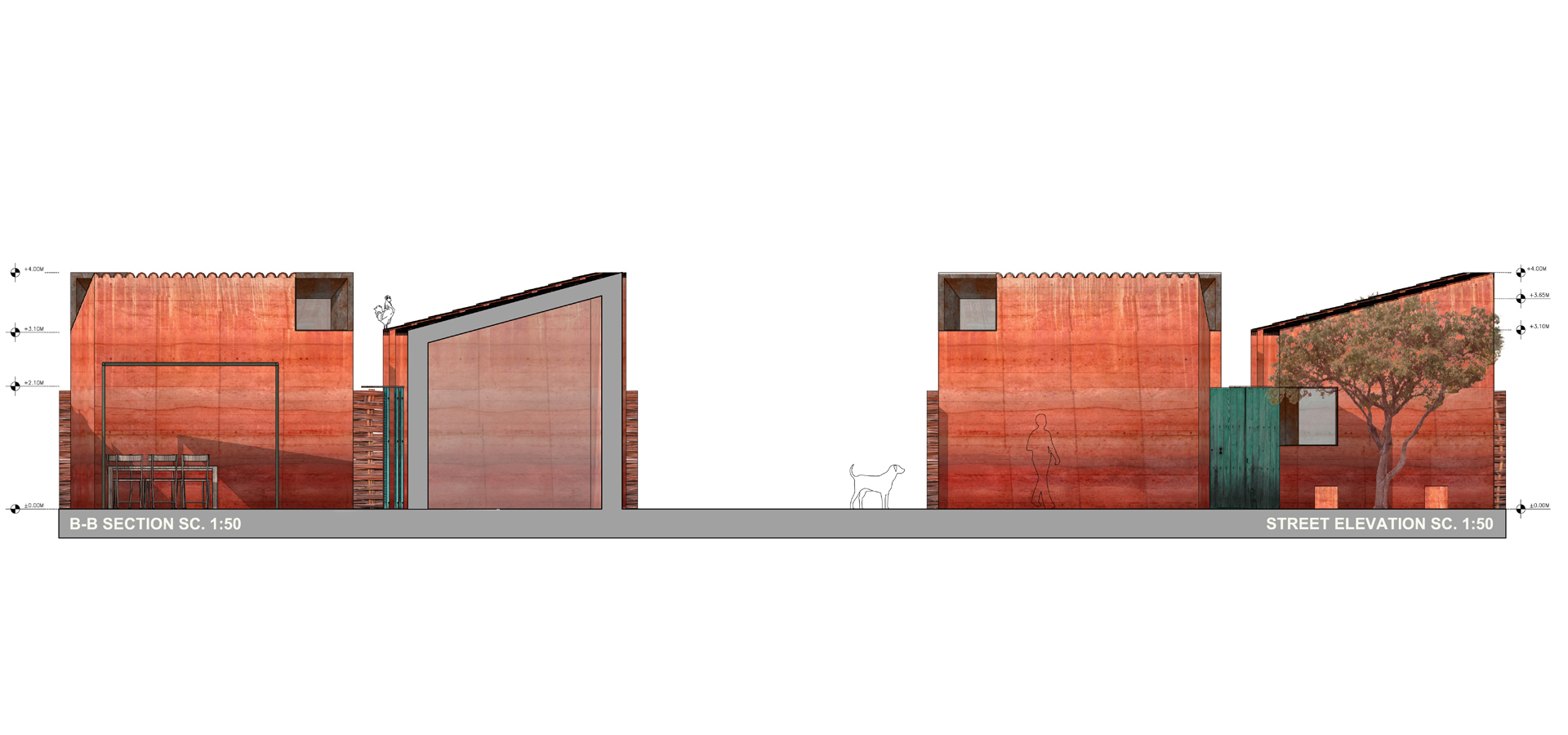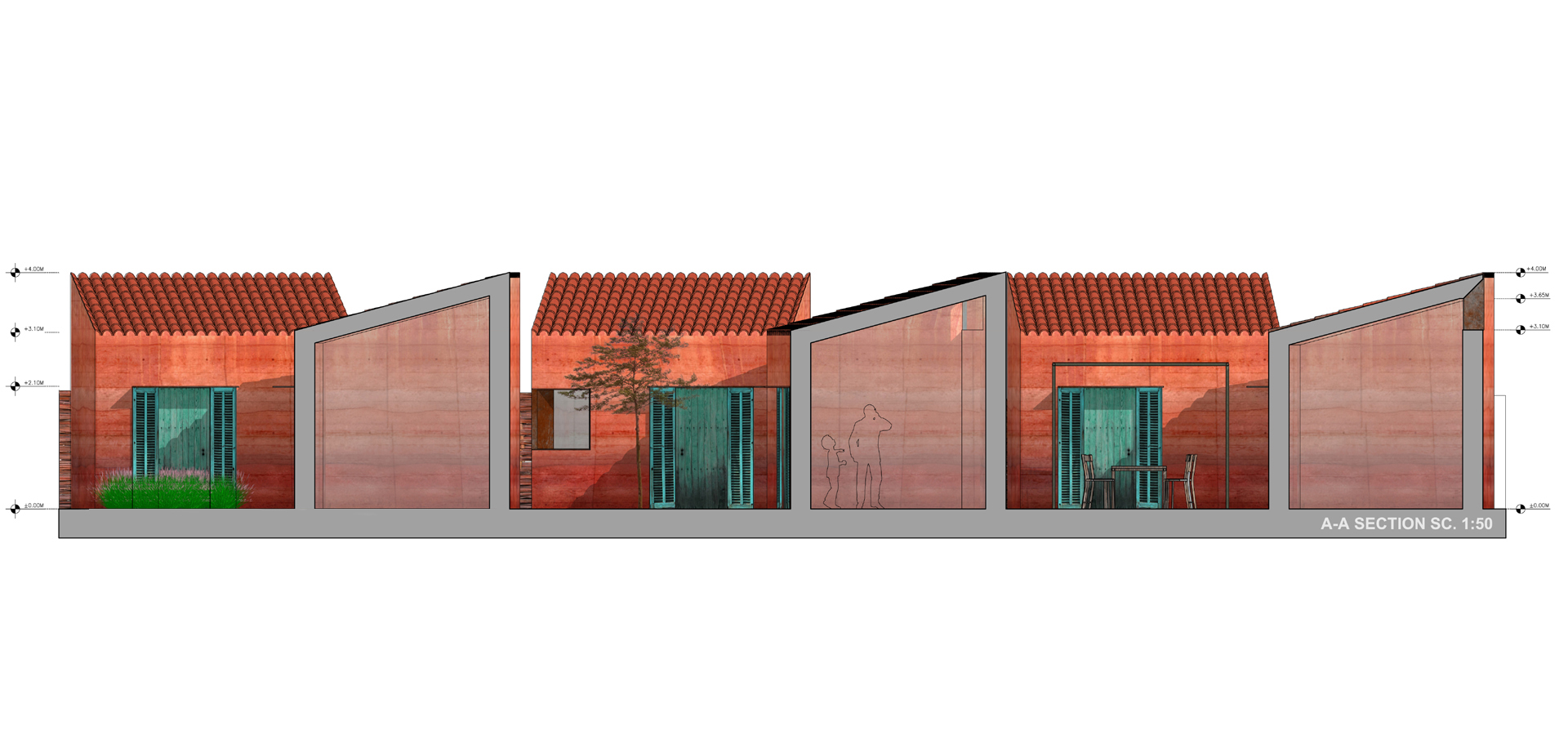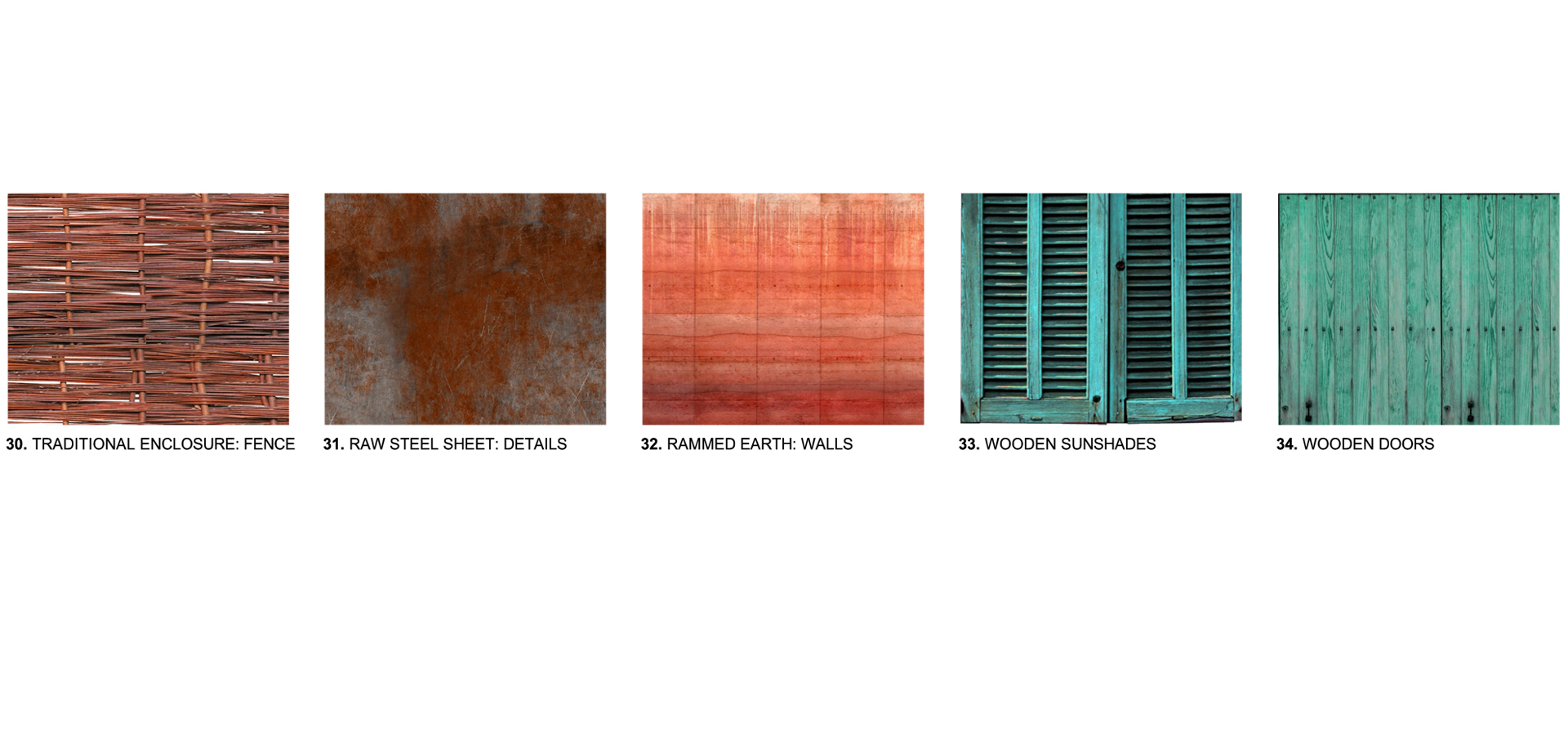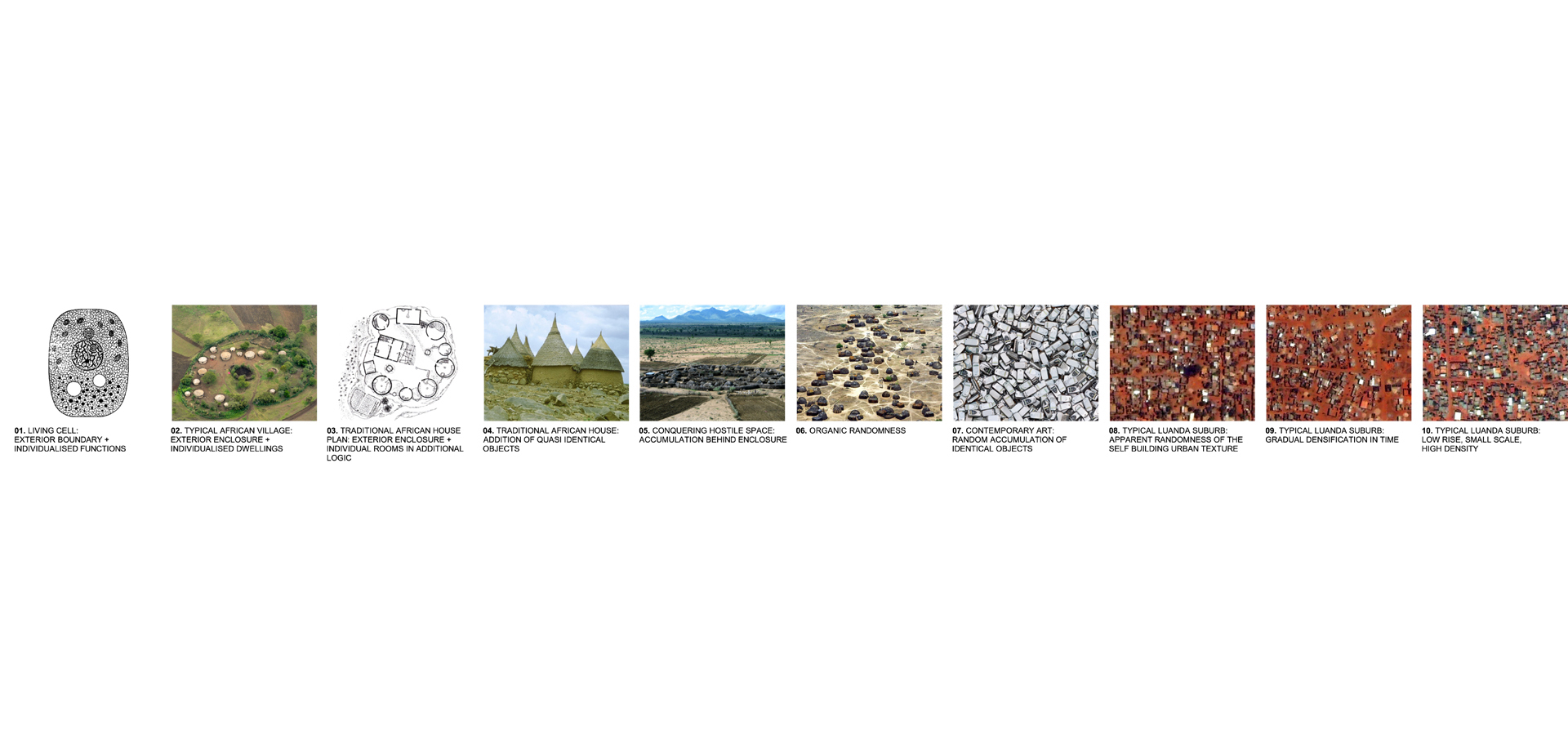
Patio and Pavilion
View project description2010Competition Patio and Pavilion
2010 / Competition / Patio and Pavilion
Location: Louanda, Angola
Project Status: Competition
Architecture: E+EA – Mihai Ene, Adela Ene, Stefan Cristescu
Structure: Profesional Construct – Paul Ioan
Client: –
Surface: 100 sqm
Period: 2010
Renders: E+EA
Model: E+EA
Our analysis of traditional African architecture has indicated a recurrent theme traceable in the design of villages and even individual dwellings: the organization of space through the means of exterior boundaries and the aggregation of singular elements which perform a different function. The similarities between this type of morphology and that of a basic living cell are, in our opinion, striking and very disturbing, to such an extent that one would be tempted to rule out mere hazard. The organic character of this kind of architecture can be found in other traditional cultures, but nowhere does it seem more present than here.
A study of the peripheral areas of Louanda reveals a high density, low rise, small scale, self organizing almost random urban texture.
These observations act as a starting point of our proposed design for a single, extended family dwelling prototype in Louanda. Severe space (surface) and budget limitations, particular weather patterns impose a decisive architectural position. Our scenario is intended for a 7 member family (parents, grandparents, 3 children) but can be easily extended to a 8 or 9 member family. Housing such a large number of people in only 100 sqm is no easy task. Our approach intends to deal with this problem using a similar type of space logic that was deciphered in traditional local architecture: the division of the available space into small, individual, single story, identical modules capable of serving different functions: parent’s room, grandparent’s room, 2 children rooms, kitchen and bathroom. Only the basic human needs will be housed in the available interior space: the exterior spaces resulted from the arrangement of these modules, a sort of mini patios being just as important and act like a kind of exterior “rooms”. Most daytime activities are envisioned to take part outside, in the patios. No costly circulation spaces. Once again, “the organization of space through the means of exterior boundaries and the aggregation of singular elements which perform a different function”.
Some of the benefits that can be associated with what at first glance could seem a deceptively rudimentary scheme could be summarized by the following:
A simple, cheap and ecological construction method – rammed earth – delivering quality space with an appealing visual and tactile presence. A 35 cm thick rammed earth wall is capable of attaining good heat transfer factors. Clay is found in abundance anywhere and is recyclable. Clay tiles, a minimal amount of wood used for the roof structure, doors and sunshades, traditional organic fences are the other materials that complete the building palette.
Breaking up a hypothetical volume into 6 identical smaller modules with no hierarchy is a suitable approach to for a self build, fazed scenario. The owner can start with a few modules that suit initial space needs and/or budget. The house can evolve over time and can sustain gradual individualization by means of project manipulation. We feel such alterations (that are almost inevitable over time) can actually improve and personalize individual dwellings rather than destroy the initial architecture.
Just as important as the interior space, the patios can be assigned with specialized functions such as gardens, sun sheltered spaces, small domestic animal enclosures, children play spaces. A special note on the patio adjacent to the street: it is conceived just as an extension of the street into private space (or vice-versa) and plays a very important role as a social polarizer, or a commercial area, if the household intends to pursue any small trade activities.
The apparent rigidity of such a scheme is misleading. We strongly feel that the lack of spatial hierarchy gives the inhabitants the freedom to actually plan the functional scenario of the dwelling and its system of patios. Such an approach can also be very suited because of the inevitable change that such life scenarios undergo over time: a very large number of functional permutations are possible.
According to our calculations, we feel very confident that such a house can be built with a significantly smaller amount of money than the imposed 25000 Euro budget.
